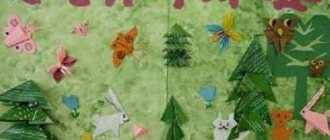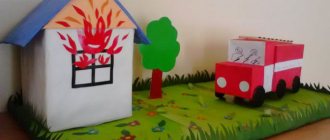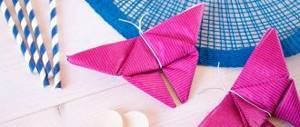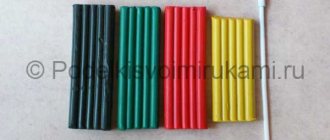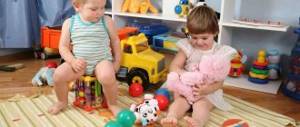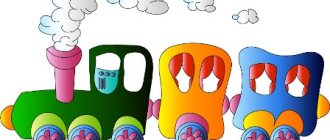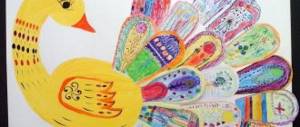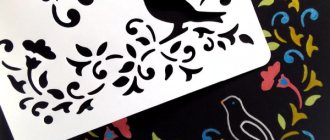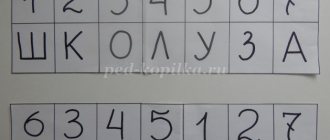Lesson summary: Different types of applique - Duck on a pond (with ducklings)
Methodological development of arts and crafts classes
"The World of Applique".
Topic of the lesson: Application. duck
(with family).
Svetlana Anatolyevna Serebryakova, teacher of additional education, MBOU “Secondary School No. 40”, Petropavlovsk-Kamchatsky. Purpose of the lesson: To clarify and expand students’ knowledge about the application. Objectives of the lesson: Educational: - teach to see the author’s ideas in a sample, ask your own questions while viewing and studying the sample, conduct a dialogue; - training in safe ways and techniques of working with materials and tools. Developmental: - development of independence and the ability to solve creative problems; — development of skills to analyze a sample in order to develop creative imagination: plot, details, ability to predict the development of an event. Educational: -instilling work culture skills; - fostering perseverance, accuracy, patience and hard work.
Materials and tools:
- Colored cardboard and paper of different shades.
- Markers (brown and black) or gel pen.
- Templates.
- PVA glue.
- Scissors.
- Pictures of birds, feathers, tables.
Equipment: - multimedia equipment - CD - disk with bird sounds, musical accompaniment for the lesson - samples of finished products Lesson plan.
1. Organizational moment 2. Familiarity with the sample, drawing up a work plan. 3. The main part of the lesson is practical (setting a learning task, repeating old knowledge, mastering new concepts and methods of action) Physical exercise 4. Summing up the lesson. Reflection on activity Progress of the lesson Stage 1. Organizing time. Introductory conversation Greeting of the group and the emotional mood of the children (The music “Sounds of the Forest” sounds quietly) Teacher: ... We are all carried away into the distance On the same planet - We are the crew of the same ship. Antoine de Saint-Exupery. -Who do you think WE are? (Children's answers). -Well done, the diversity of those living on planet Earth is very great, listen, whose chirping do you hear? That's right, who guessed who we're going to talk about today? -So, today we’ll talk about birds. Birds... Familiar and unfamiliar, our distant and close neighbors on the planet. They always attracted human attention. Even in the rock paintings of primitive people you can see images of ducks and geese, eagles and swans. For example, in Ancient Egypt there were more than five thousand gods and many of them had the appearance of birds (Falcon is the Sun God named Horus). -Let's remember what distinguishes birds from other creatures? “The miracle of flight,” many will say, is their inherent magnificent and enviable ability, seemingly without any effort, to lift off from the ground and fly over the vast expanses of water and land. But bird experts will probably say: feathers are the only feature that is unique to birds. It was feathers that made bird flight possible. -Close your eyes, determine by touch what is in my box? (Showing feathers) - What feathers are used and what are they used for? (1. Flight feather. 2. Outline feather. 3. Down feather.) - Guess the riddle and the guest of our lesson today will find out: Along the river, along the water, A string of boats floats, A ship goes ahead, Leading everyone behind it. (Duck with ducklings). — There are more than 112 species of ducks. Consider the duck in the picture. What is she like? (Large, motley, multi-colored...) Stage 2. Examination of the sample (without ducklings), type of work, materials and tools necessary for work, safety precautions, drawing up a work plan, selection of materials. a) Introductory briefing - during work, do not be distracted and do not distract others - during work, do not leave the blades of the scissors open - pass the scissors with the blades closed, rings forward - prepare the workplace, tools - check the sufficiency of lighting at the workplace Work plan:
- Water surface and reeds. (Selection of paper by color)
- Duck. (Selection of paper for the base of the duck, head, tail)
- Duck wing (selection of paper for the base and “feathers”)
- Basics of work
Stage 3. Practical work. b) Safety precautions during work - keep the workplace clean, do not allow the workplace to be cluttered with foreign objects that are not in use at a given time - be careful while working, do not be distracted or distract others - pass piercing and cutting objects with the handle away from you , place them on the table to the right with the sharp end away from you, the blades of the scissors must be closed when not in use - when working with scissors, you must monitor the direction of cutting and the fingers of your left hand, which support the material - while working, sit straight and do not bring the work close to your eyes -apply glue to the cut out part with a brush. Independent work according to the drawn up plan.
- Water surface. In accordance with the sample and the selected paper according to the templates, cut out all parts of the water and glue them together. Make reed.
- Duck.
— Cut out the base from gray cardboard. - Glue a light brown head on it, and a yellow beak on it. - Glue the white part under the light brown neck, and the dark brown part under the white neck. - Glue colored “feathers” onto the duck’s gray wing. -Glue the finished wing onto the duck, and glue a fragment of the second dark brown wing on top. c) ongoing instruction (group, frontal, individual is possible)
- What's unusual about the applique you noticed on the sample on the duck? (Use felt-tip pens or gel pens to draw a nose, eye, feathers) Who knows what this type of work is called? Today we will add collage to our creativity. Think about what collage is and why it is used in appliqué? (The word collage itself means “gluing, sticking.” Collage has become an art form. It is used to obtain the effect of surprise, for the sake of emotional richness. The collage can be completed with any other means - pen, ink, watercolor, pastel.)
-Draw the duck’s nose, feathers, and eye with a gel pen; it leaves a thinner mark. Physical education lesson The duck quacks, waddles, calls with a beckoning gesture with his hands, takes all the ducklings with him. quick, mincing waddling steps, and the cat follows them, as if to a watering hole. the insinuating steps of a cat The cat has a cunning look, squint his eyes, look slyly. Long claws, show scratchy bits. Don't look at the ducklings! shake a finger
- - Remember the works in which ch. The characters were ducks.
- Well done. How did D. Mamin-Sibiryak’s work “The Gray Duck” end? -Let's write a happy ending to this story. A fluffy sailor, a spade-shaped nose, and short red boots. - (Ducklings). — Take light yellow cardboard and cut out ducklings. - Using a felt-tip pen or pen, draw the lines of heads and tummies, eyes. — Let’s glue on the ducklings’ beaks, paws, and wings.
- Assembling all parts into a single composition.
— We glue water surface and reeds onto the base. -We place a duck in the center of the water surface, and ducklings on top. In the process of work we learn interesting information. Do YOU know...? - How many feathers do birds have? (Their number depends on the size of the bird and increases in winter. A swan has 25 thousand feathers, of which 20 thousand are on the neck and head. Sparrows have 3 thousand feathers. Hummingbirds have about a thousand.) - Why do the birds need them? 1. For flight. 2. Light and durable clothing. 3. Maintaining a constant body temperature from 39 degrees to 45. -What kind of wind is favorable for a bird? (“A tailwind for a bird is a headwind. It gives good support to the wings, speeds up and facilitates flight. And the wind from behind slows down and stops the birds, so that when flying they are sometimes forced to stop for several days, waiting for the required wind.) - Let’s consider table showing the legs of different birds. -Find the foot that belongs to the duck. -How did you guess? Peculiarities? (Embrandoms). -What are they needed for? (Help for easy swimming). Stage 4. Summing up the lesson. Reflection of activity. d) final briefing - analysis of the implementation of practical work - analysis of errors - Review your work, give it a name. Who liked their job? -What didn’t work out? -What will we continue to learn? _Clap your hands if you think your job was done “excellently” _Snap your fingers if you think the work could be done better _Stomp if you think you didn’t succeed and need to finish something else -What type of activity did you do? ? (Applique) -What new did you learn? What is collage? On the trail. In our classes we will get acquainted with different types of collage. — I think that our duck guest was satisfied with your work, guys, thank you everyone for your active work in class.
Preparing a modeling lesson on the topic “Birds” in the preparatory group
Children aged 6–7 years actively learn about objects and phenomena of the surrounding world, the connections that occur between them, and with pleasure reproduce them in creative works, reflecting their attitude to these images. Older preschoolers master basic modeling techniques and are familiar with the methods of creating figures from plastic material. The teacher does not use direct demonstration of practical modeling actions; the main teaching task in the classroom is to develop the skill of planning work and predicting the desired result by the students themselves.
Modeling lesson in the preparatory group
In the preparatory group, children practice creating three-dimensional objects from plastic materials, trying to convey the characteristic features of the objects as accurately as possible. Modeling of convex objects on a plane is rarely carried out; as a rule, tasks are carried out to produce a three-dimensional craft and then attach it to a paper or cardboard base. The theme “Birds” is aimed at developing and further consolidating the ability to convey in sculpting the images of various types of birds, the structural features of their body, the shape of the limbs, tail, beak, and color of plumage. After studying visual materials (pictures of birds, toys or figurines), the children sculpt figures according to the idea. Pupils in the preparatory group must be given the task of conveying the characteristic pose of the bird. Children learn to depict the position of the body, paws and wings of a bird in motion: a bird sits on a branch, pecks berries, prepares to fly, sings, straightens or cleans its feathers, etc. Images of fairy-tale and magical birds are also sculpted from the imagination. Modeling from life can be carried out in the preparatory group during classes on creating birds based on folk craft toys (Gzhel, Dymkovo, Filimonov, Kargopol toys). The children study the structure of a clay figurine, the teacher talks through the stages of sculpting the toy (as an option, learns the instructions for following the techno map), the students perform the practical part, having a sample in front of their eyes.
Modeling a bird based on the Dymkovo toy
Let's look at the methods and techniques of modeling used by children to create birds:
| Modeling method | Target | Modeling technique |
| Constructive | Creating an object from separately sculpted elements. | The child imagines the object in the form of the forms that lie in its structure, sculpts the corresponding details and assembles (constructs) the image. When working in a constructive way, all basic sculpting techniques can be used: rolling, unrolling, flattening, pinching, indenting, sharpening. When composing an object from individual elements, the technique of joining and subsequent smoothing of the seams or smearing of parts is used. Example. To sculpt a crow in a constructive way, you need to prepare an elongated ball for the body, a ball for the head, a pointed ball for the beak, the legs will be sculpted from rolled out sausages, the tail from a small flattened cylinder, the wings from flattened balls. |
| Plastic/sculptural | Modeling an object from one piece of plastic material. | Before practical work, the child imagines which one shape is the basis of the object (for a bird - the shape of an egg). A blank of this shape is rolled out of a plastic material, slightly kneaded with the palms, the material warms up and becomes pliable. The child models an image from a blank, using the techniques of pulling, pinching, twisting, and pressing in. Example. Modeling a sparrow using a sculptural method involves pulling out parts of a figurine from an egg-shaped blank in the following order: neck, head and beak, wings, legs, tail. |
| Combined | A combination in practical work of constructive and sculptural techniques to create an object. | This method is most often used by older preschoolers. The child sculpts the main part of the figure in a constructive manner and supplements it with separately sculpted parts. Example. To sculpt a cockerel, the body, head and neck of the bird are sculpted from an egg-shaped blank, then wings and paws, a comb and beard, and tail feathers are created and applied. |
Methods for sculpting a bird
Constructive method Plastic method
Combined method
Varieties of bird sculpting
- Object modeling. By creating an image of a bird, older preschoolers improve their modeling skills and the ability to decorate a craft. The guys work out the surface of the figure using a stack, a pointed stick, scissors, and figured caps for squeezing out patterns. Natural materials and accessories can be used to decorate the model and base: cereals, straw, sticks, natural or artificial feathers, beads, seed beads, buttons, etc.
An example of object modeling using feathers for decoration - Subject modeling . In the preparatory group, children improve their ability to sculpt the figure of a bird in motion. In individual and group forms, they complete the task of creating story scenes. The lessons “Cockerel with his family” (based on the story by K. D. Ushinsky), “Migratory birds are flying”, “Bird yard”, etc. are devoted to sculpting compositions from bird figures. In plot sculpting, students not only strive to convey the characteristic features of birds, but also the muscular features of body position in motion and interaction between the characters in the composition. Subject composition
- Decorative modeling. The children consolidate their ability to sculpt based on folk crafts (clay toys, whistles). In the preparatory group, you can conduct clay modeling classes, which is important for this form of classes: after drying, clay crafts can be painted in a decorative drawing class. Based on folk art, the children sculpt figures of a rooster and a hen, a turkey, a conventional bird; on the figures they can use modeling techniques that are new for preschoolers - molding and bas-relief.
Decorative modeling based on the Dymkovo toy
Pupils of the preparatory group are given freedom to think through an artistic concept, stages of work and techniques for its implementation. It is important that children have access to materials and tools. In the room where visual arts classes are held, it is recommended to arrange a rack or cabinet in which everything needed to create a composition would be stored. Based on their taste preferences, assessment of their own abilities and the idea presented, the children independently select plasticine for modeling, take tools, and additional materials for decoration. Also, the rack should be prepared with various options for the base of the craft: a set of colored paper, cardboard, embossed paper or velvet paper. To create a base from a cabinet with materials and tools for drawing, children can take pencils, markers, paints and brushes. Sometimes the plasticine crafts themselves are painted, most often during decorative modeling classes: the children paint the finished figurine or toy in the style of folk painting.
Theme "Birds" in long-term planning for modeling in the preparatory group
In the “Modeling” section of the educational program “Artistic and Aesthetic Development” in the preparatory group, the theme “Birds” is presented in many classes. It is revealed when learning to sculpt from life and from imagination, to create images of folk tales and works of art (including images in, decorative drawing.
| Lesson topic | Organizational form of activity | Training and development tasks |
| "Poultry" | Individual. | Consolidating the ability to sculpt a bird figure from an idea. Development of the ability to convey the features of the structure of the bird’s body and the characteristic movements of the bird. Improving the ability to decorate crafts using tools and additional materials. |
| "Poultry yard" | Collective. | Consolidating the ability to sculpt bird figures in motion according to the presentation. Activating interest in working in a subgroup. Developing the ability to create a plot composition: displaying the relationships between the characters in the scene, the correct arrangement of figures in the composition, designing the basis of the work. |
| "Migratory birds are flying" | Collective. | Improving the ability to convey the characteristic features of the structure and posture of birds in motion. Development of group activity skills. Developing interest in thinking through the basis of the composition (thematic or plot background). Developing the ability to predict teamwork and analyze results. |
| "Crow" | Individual. | Development of the ability to create an image of a work of art: the children sculpt a crow based on A. A. Blok’s poem “The Crow” (“Here is a crow on a sloping roof...”). Improving the ability to convey the characteristic features and pose of a bird. Development of the ability to independently choose the method and techniques of modeling, materials and tools, predict the stages of action. |
| "Sparrow" | Individual. | Development of the ability to create an image of a work of art: the children sculpt a sparrow based on the poem by S. Ya. Marshak “Where did the sparrow have lunch?” from the series “Children in a Cage”. Honing your skills in sculpting a bird in motion. Improving the ability to create an individual composition (children can create an animal from a poem that has a sparrow in its cage). Developing the ability to combine various types of visual activities in work: to design the basis of a craft, children can use the techniques of appliqué, drawing, and plasticineography. |
| "Duck" | Individual. | Development of the ability to create an image of a work of art: the children sculpt a duck based on the fairy tale “The Gray Neck” by M.D. Mamin-Sibiryak. Individual task option: in a subgroup of 2-3 people, children can create a plot scene based on a selected episode of a fairy tale. Consolidating the skills of sculpting a bird figure in motion. Improving the ability to design the basis of a composition, if necessary using the techniques of appliqué, drawing or plasticineography. |
| "Owl" | Individual. | Improving the ability to sculpt a bird from an idea. Development of the ability to independently think through the design of a craft, the stages of practical work, the method and techniques of modeling, the choice of materials, tools, natural materials and accessories for decorating the composition. |
| "Titmouse" | Individual. | Improving the ability to sculpt a bird from an idea. Development of the ability to independently think through the design of a craft, the stages of practical work, the method and techniques of modeling, the choice of materials, tools, natural materials and accessories for decorating the composition. |
| "Bullfinch" | Individual/collective. | Development of the ability to create an image of a work of art: the children sculpt a sparrow based on the story “The Bullfinch” by Yu. Dmitriev. Honing your skills in sculpting a bird in motion. Improving the ability to create an individual composition: a bullfinch treats itself in a feeder, pecking at berries, sitting on a spruce branch, etc. Developing the ability to combine various types of visual activities in work: to design the basis of a craft, children can use the techniques of appliqué, drawing, and plasticineography. An option for assigning a lesson on the topic “Bullfinch” could be the creation of a collective composition “Bullfinches on a mountain ash”: the guys together design a sheet of half-paper paper as the basis of the composition (they draw a watercolor background with transitions, a tree, using the plasticine technique they can depict withered leaves or snow on the branches, elements clusters of rowan berries are created using plasticine mosaics), bullfinches figures are individually sculpted in various poses and placed in the overall composition. Development of collective activity skills: thinking through a plan, distributing responsibilities. Developing the ability to analyze the process and results of teamwork. |
| "Swan" ("Swan") | Individual/collective. | Improving the ability to sculpt a bird from an idea. Developing the ability to independently think through the design of a craft, the stages of practical work, the method and techniques of sculpting, the choice of materials, tools, natural materials and accessories for decorating the composition. It is possible to sculpt the image of a work of art: students are invited to portray the Swan Princess from A. S. Pushkin’s fairy tale “The Tale of Tsar Saltan.” Option for an individual task for working in a subgroup: modeling the composition “Swan Lake”. |
| "Cockerel with his family" | Collective. | Developing the ability to create a story scene through joint efforts. Consolidating the ability to sculpt poultry from an idea. Development of the ability to create images of a work of art: the children sculpt a scene from the story by K. D. Ushinsky “Cockerel with his family.” Forming the ability to collectively think through the stages of work and create an overall composition. |
| "Duck", "Turkey", "Rooster" | Individual. | Formation of the ability to sculpt a bird figure based on the Dymkovo toy. Improving the ability to sculpt using a combined method: the main shape of the Dymkovo toy is sculpted from a whole piece, parts for the wings and sometimes the tail are sculpted separately. Development of the skill of painting a sculpted toy. Developing interest in works of folk art and the desire to create crafts based on the works of Dymkovo masters. |
| "Kalinin Birds" | Individual. | Formation of the ability to sculpt a bird figure based on a Tver (Kalinin) toy. Improving the ability to sculpt using a combined method. Development of the skill of painting a sculpted toy. Developing interest in folk crafts and the desire to create crafts based on the works of Tver masters. |
